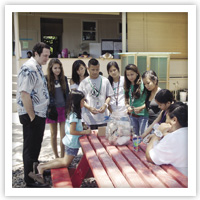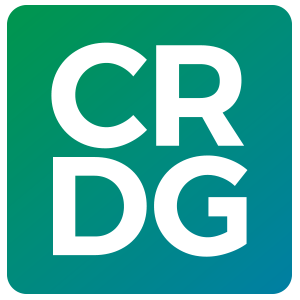
15 Mar University Laboratory School: A Unique Partnership
 The long-standing partnership between CRDG and the University Laboratory School (ULS) is unique in its ability to marry cutting edge research with a living laboratory on the same campus. In its forty-plus years as a research site, the school has served as a home for researching, designing, testing, and evaluating effective approaches to improving learning, teaching, and assessment. As many of CRDG’s curricula have matured, the school has taken on the additional role of demonstration site for the various exemplary programs and for approaches to teaching and learning with heterogeneous groups of students engaged in a full liberal
The long-standing partnership between CRDG and the University Laboratory School (ULS) is unique in its ability to marry cutting edge research with a living laboratory on the same campus. In its forty-plus years as a research site, the school has served as a home for researching, designing, testing, and evaluating effective approaches to improving learning, teaching, and assessment. As many of CRDG’s curricula have matured, the school has taken on the additional role of demonstration site for the various exemplary programs and for approaches to teaching and learning with heterogeneous groups of students engaged in a full liberal
arts curriculum.
The ULS has always served two interlocking missions: to design and deliver the best possible education to its students, and to serve the educational research and development community through the invention and testing of high quality educational programs. The student population at ULS is randomly selected from among applicants to represent a broad cross section reflecting the state population’s distribution of gender, academic achievement, family income, and ethnicity. All students take a challenging comprehensive curriculum that includes English, mathematics, science, social studies, art, music, performing arts, and foreign languages, as well as electives each year. All students take the identical core curriculum in middle and high school in non-segregated classes, and all students graduate ready for college, work, and responsible citizenship.
 The school curriculum is performance-based and built on multi-year sequences of learning emphasizing creativity, inquiry, problem solving, and active learning. The broad range of activities included in the school’s core curriculum allows its students to excel in state- and national-level competitions in all areas. Approximately 80 percent of ULS students participate in activities outside of school in visual and performing arts, speech, mathematics, music, writing, science, social studies, and athletics. The school is widely recognized as successful with diverse learners, as substantiated by high scores on standardized tests, graduation rates, and post-secondary enrollment. Non-academic indicators that add to this picture of success include daily attendance rates between 95 and 98 percent, and consistent college acceptance rates in the neighborhood of 98 percent.
The school curriculum is performance-based and built on multi-year sequences of learning emphasizing creativity, inquiry, problem solving, and active learning. The broad range of activities included in the school’s core curriculum allows its students to excel in state- and national-level competitions in all areas. Approximately 80 percent of ULS students participate in activities outside of school in visual and performing arts, speech, mathematics, music, writing, science, social studies, and athletics. The school is widely recognized as successful with diverse learners, as substantiated by high scores on standardized tests, graduation rates, and post-secondary enrollment. Non-academic indicators that add to this picture of success include daily attendance rates between 95 and 98 percent, and consistent college acceptance rates in the neighborhood of 98 percent.
The school’s role as a research laboratory and as a research institution working to change its practices to respond to twenty-first century challenges are featured throughout this report.




